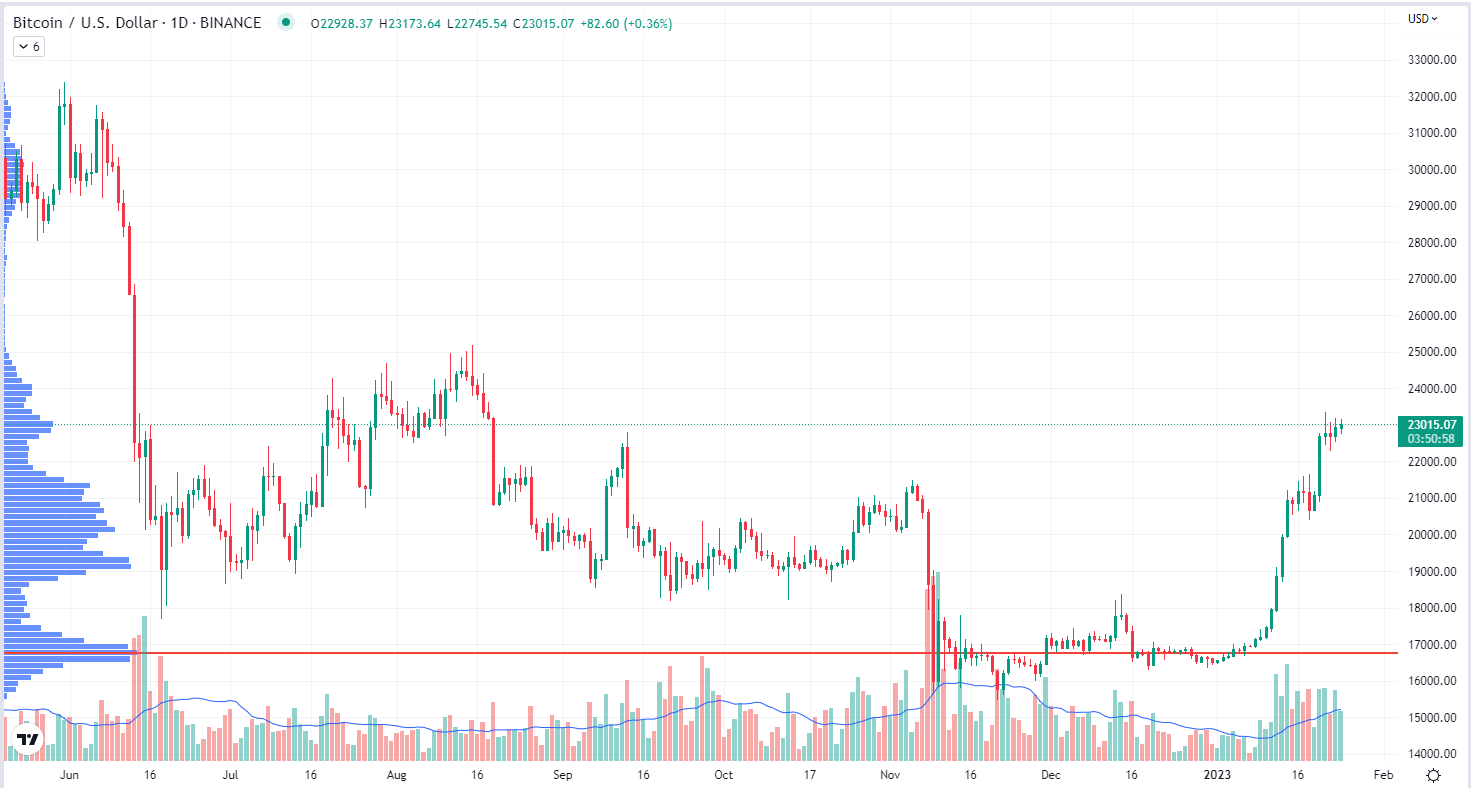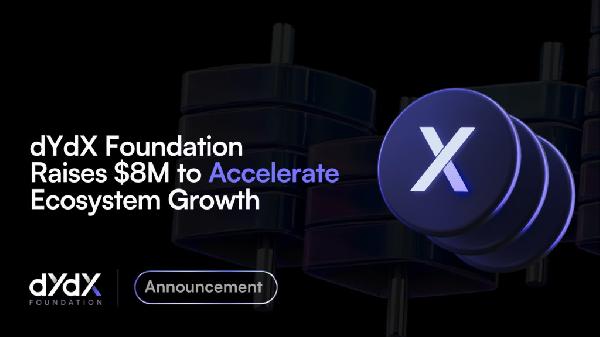Bitcoin and ether’s trading range has begun to narrow as the two largest cryptocurrencies by market capitalization look to establish new areas of support. Following last week’s 8 and 5 gains, BTC and ETH’s price movement has yet to exceed a percentage point over the past four days.
BTC rose 0.4 on Saturday, declined slightly on Sunday and inched upward 1 and .09, respectively, over the first two days of this week. Ether has traveled similarly during the same period.
Unsurprisingly, both assets have paused after their strong start to 2023. Bitcoin is now trading at levels last seen in August. Ether last traded near its current levels in November.
Bitcoin’s chart implies new support levels forming near $22,900. The volume profile visible range (VPVR) tool, shows increasing levels of activity and price agreement at this mark. Often these are called high-volume nodes, and can indicate where the market sees an asset as fairly priced, at least for the moment.
Other recent high-volume nodes occurred near $17,000 and $19,000. As is common with high volume nodes, prices remained at those levels for extended periods. In short, supply and demand match relatively evenly at these levels. Low-volume nodes imply a lack of price agreement. Prices tend to move rapidly through these price ranges.
Monday’s crypto markets analysis mentioned the extent to which both short- and long-term investors are now in a profitable range on average, which could decrease the desire for some holders to sell.
One area is concerning, however. A report by digital asset firm CoinShares revealed that crypto investment products had $37 million of inflows last week. Of that amount, 68 was sent to short investment products, betting against the price of bitcoin.
Activity within the U.S. was decidedly bearish on this front, with 95 of inflows going into funds looking to profit on declines in bitcoin’s price.
While U.S. investors may think that BTC is overpriced, another plausible explanation is that holders are allocating to short investment funds, to merely hedge against their current long positions.

(TradingView)








